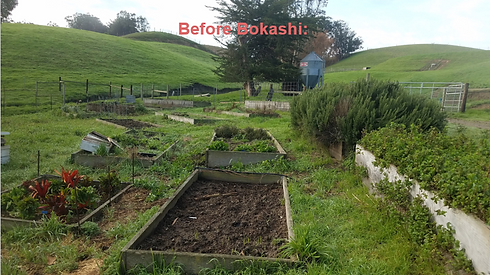
Bokashi Composting System
Ever wish you could grow your own fresh, organic food? Feel bad about dumping food scraps in the trash? We at Thrive and Grow have got just the fix: Bokashi!
Bokashi is an ancient form of compact-composting that relies on bacteria to 'pickle' food waste, creating a nutrient-rich fertilizer/amendment. Think kimchi for your garden. There's non piles, no turning, and it can fit under your kitchen sink. It's a quick-and-easy way to reduce waste, help the environment, and build your soil!
Food waste is a major issue in America. On average, we throw away 30-40% of the food produced: it's the largest input to landfills in the nation. The good news?
With bokashi, we can turn this issue into a solution by putting the nutrients back where they belong - the soil! Bokashi is especially useful for areas where it's hard to find reliable local compost, like the desert or large cities.
1. Line bucket bottom with 2-3" of any carbon rich material (newspaper, shredded cardboard, dry leaves, sawdust, etc.) and ~3tbsp of bran
2. Add 1-2" layer of food scraps (all scraps accepted, even meat and diary
3. Sprinkle ~3tbsp of bran
4. Compact scraps to remove air
5. Replace lid. Store at 60-90 degrees F and out of direct sunlight (garage, under the sink, etc.)
6. Repeat steps 2-5 until full
7. When full, store and wait 2 weeks
8. Bury finished Bokashi about 12" deep wherever you want fertile soil! (potting soil, garden, landscape, or compost pile)
9. Direct seed now or wait 2 weeks to transplant!
1. Avoid adding large amounts of liquid or animal byproducts
2. If it goes bad... either dig trench and add liberal amounts of bran or add unfinished bokashi to aerobic compost pile.
3. Do not put too much already-spoiled produce into bucket (if you must, add lots of bran)
4. Smaller pieces will ferment faster than larger pieces.


What is Bokashi?
Why Bokashi?
How to Bokashi

Tips
We at Thrive have created an even simpler way to bokashi than most systems on the market by adding the absorbent, carbon-rich bottom layer made of cardboard, newspaper, etc., thus removing the need to drain the bucket. We think this is especially helpful in the desert where it's hard to find good sources of carbon for the soil.
F.A.Q.
Q: Do plants like it?
Fertility tests on plants grown with bokashi were equal-to or more nutrient dense than vermicompost or aerated compost. It is also guaranteed to be packed with loads of beneficial bacteria for plants and the soil.
Q: What are the rules?
*14 days to full fermentation (lil' less in warm places, lil' more in cold.)
*Must remain anaerobic
Q: How much area does one bokashi bucket fertilize?
It depends on how thick you lay the bokashi, but 1 gallon will cover about 1 square foot.
We at Thrive hope to reduce the city's food waste and empower everyone to grow their own food, anywhere.

